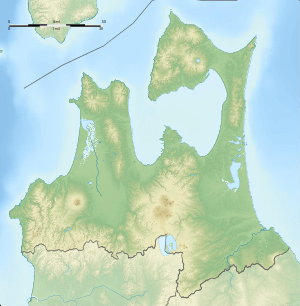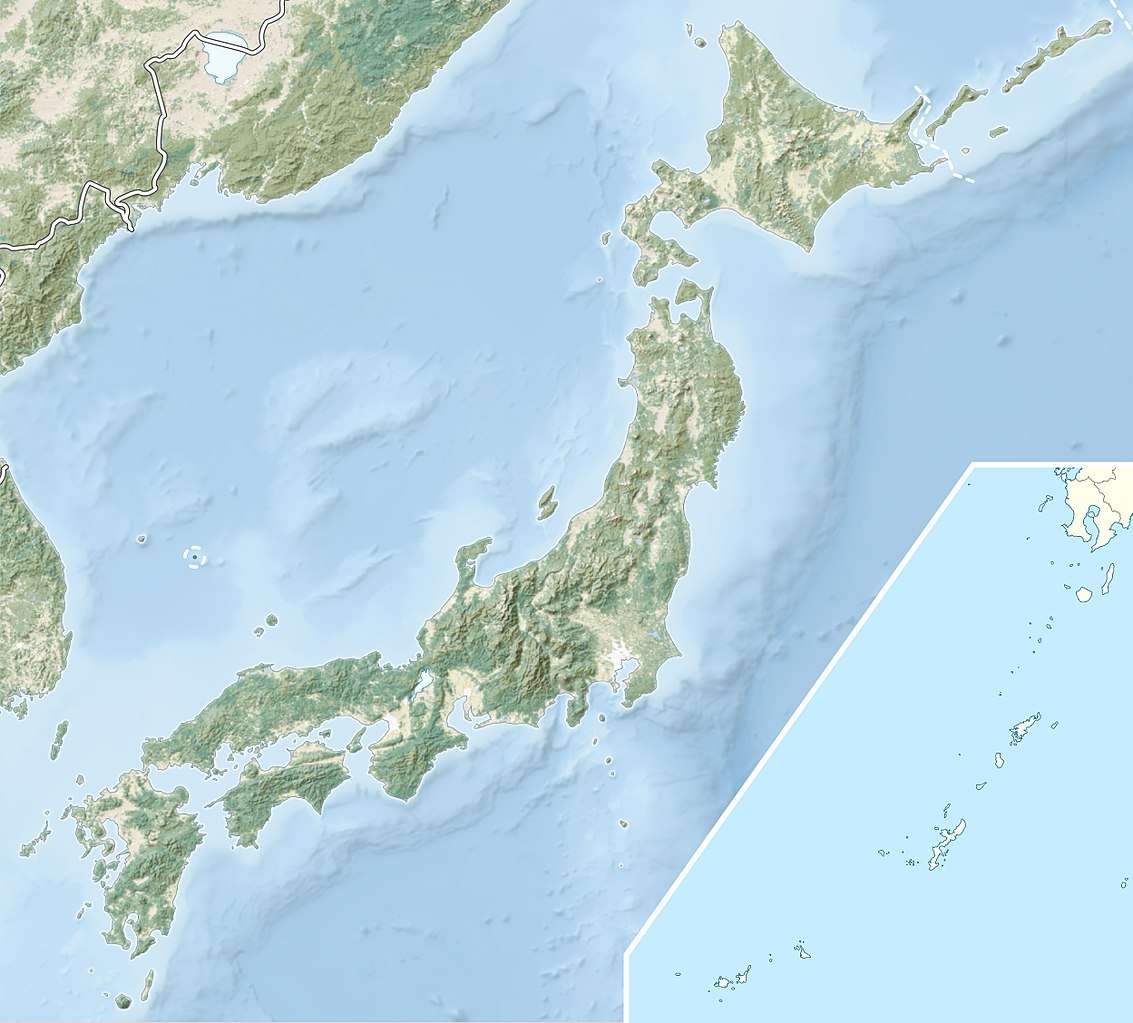Shichinohe Castle
| Shichinohe Castle 七戸城 | |
|---|---|
| Shichinohe, Aomori Prefecture, Japan | |
|
Reconstructed east gate of Shichinohe Castle | |
 Shichinohe Castle 七戸城  Shichinohe Castle 七戸城 | |
| Coordinates | 40°41′53″N 141°08′56″E / 40.69806°N 141.14889°E |
| Type | hirayama-style Japanese castle |
| Site information | |
| Open to the public | yes |
| Condition | ruins |
| Site history | |
| Built | Kamakura period |
| Built by | unknown |
| In use | Sengoku period |
| Demolished | 1593 |
Shichinohe Castle (七戸城 Shichinohe-jō) was a Japanese castle located in what is now the town of Shichinohe, in Kamikita District of Aomori Prefecture, in the Tōhoku region of far northern Japan.
Shichinohe Castle was a hirayama-style castle built on a 40-meter hilltop spreading northwest from a junction between the Sakuda and Wada rivers. It originally consisted of seven enclosures, each with earthen ramparts, and with several moats.[1]
The date of the castle’s foundation is unknown, with local legend attributing it to the Kamakura period general Kitabatake Akiie or to Nanbu clan ancestor Nanbu Masanaga (d. 1360). It was controlled by the Nanbu clan for several generations, and was rebuilt extensively towards the end of the Sengoku period. However, in 1591 the Shichinohe-branch of the Nanbu clan opposed the forces of Toyotomi Hideyoshi during the Kunohe Rebellion and were defeated. The castle was abandoned in 1592 and allowed to fall into ruins.[1]
The Shichinohe Nanbu clan was allowed to survive as 2300 koku hatamoto under the main lineage of the Nanbu clan at Morioka Domain under the Tokugawa shogunate. Their revenues were increased to 5000 koku in 1694, and they were given charge of a daikansho erected on the site of their old castle in 1804. With a raise in revenues to 11,000 koku in 1819, Shichinohe Domain was created. In 1858, the daimyō of Shichinohe, Nambu Nobunori was raised to the status of castellan and granted formal permission to rebuild Shichinohe Castle as part of Japan’s increased defensive preparations again possible foreign incursions in light of the recent Perry Expedition. However, the Meiji restoration occurred before any construction could begin, and in 1873, the Shichinohe jin'ya was also abandoned.
Only scattered stone and earthen ramparts, and a small portion of an inner moat remain. A wooden reconstruction of one gate marks the entrance to the site, which is now a local city park. A Shinto shrine, the Shichinohe Shimmei-gu is now located on the site of the main bailey.
On December 13, 1941 the area was proclaimed a National Historic Site by the Japanese government.[2] In 1996, excavations in the sites of the main and second bailey uncovered relics from the 15th century.
See also
Literature
- Schmorleitz, Morton S. (1974). Castles in Japan. Tokyo: Charles E. Tuttle Co. pp. 144–145. ISBN 0-8048-1102-4.
- Motoo, Hinago (1986). Japanese Castles. Tokyo: Kodansha. p. 200 pages. ISBN 0-87011-766-1.
- Mitchelhill, Jennifer (2004). Castles of the Samurai: Power and Beauty. Tokyo: Kodansha. p. 112 pages. ISBN 4-7700-2954-3.
- Turnbull, Stephen (2003). Japanese Castles 1540-1640. Osprey Publishing. p. 64 pages. ISBN 1-84176-429-9.
References
- 1 2 "七戸城跡". 記念物(史跡) (in Japanese). Aomori Prefectural Government. March 31, 2009. Retrieved 6 March 2017.
- ↑ "七戸城跡 しちのへじょうあと". Cultural Heritage Online (in Japanese). Agency for Cultural Affairs. Retrieved 25 December 2016.
External links
| Wikimedia Commons has media related to Shichinohe Castle. |